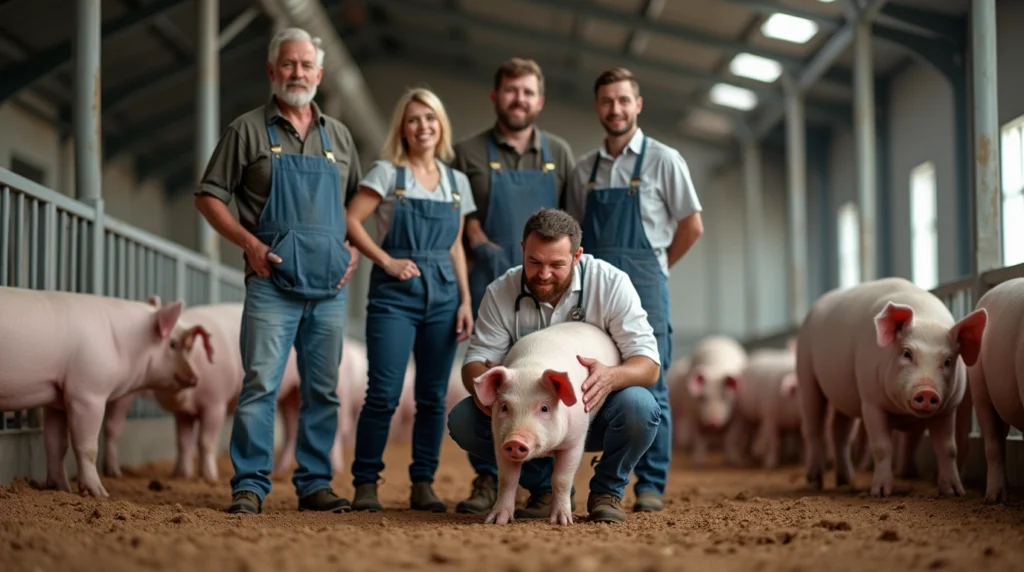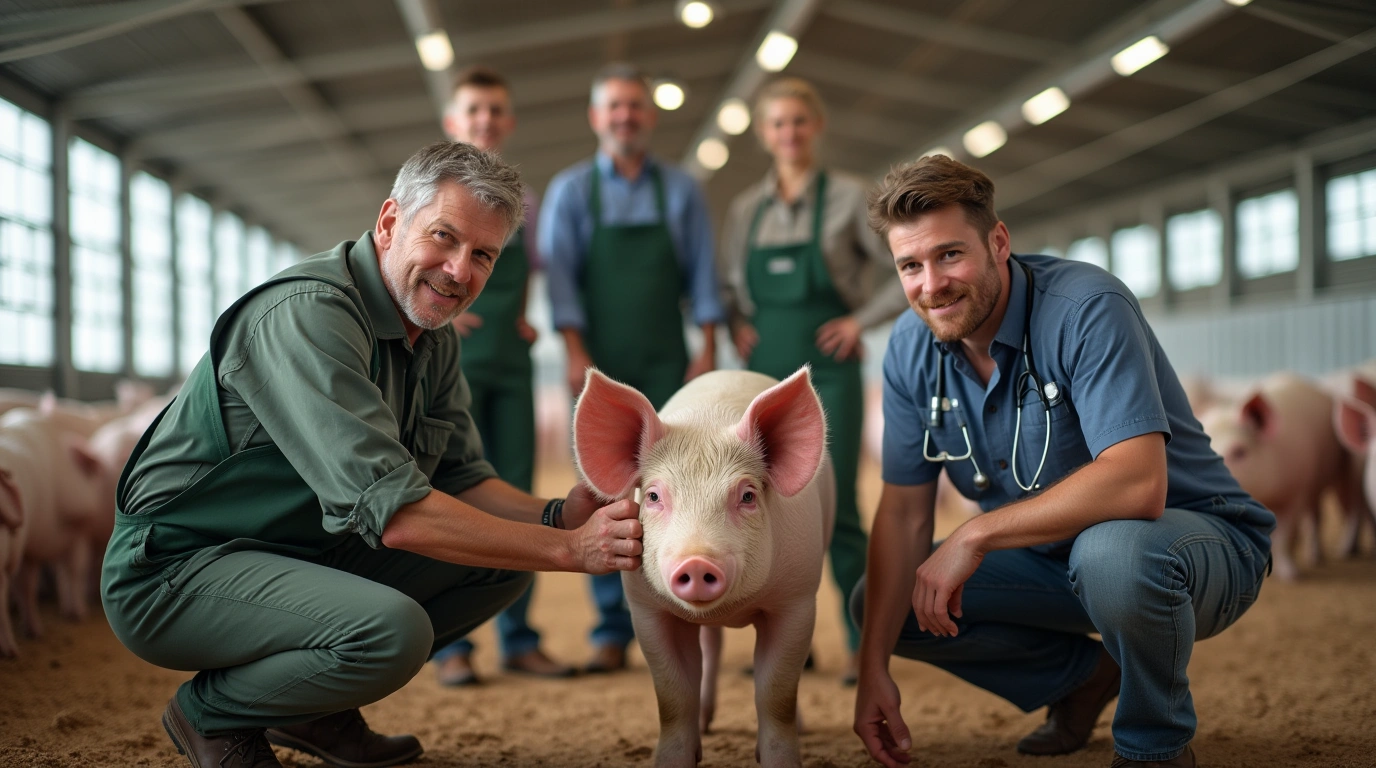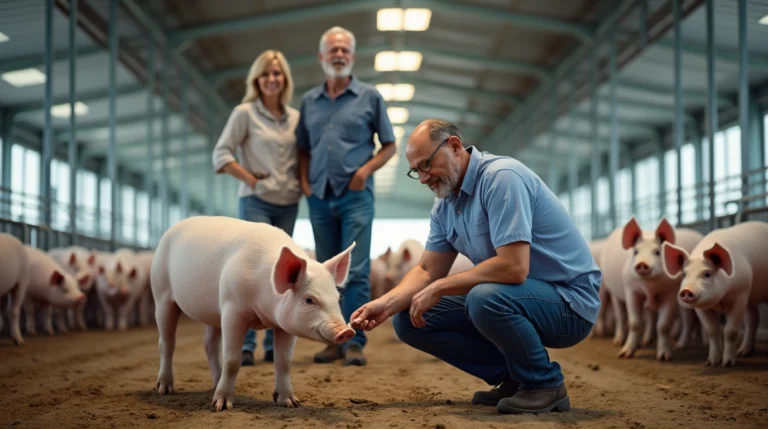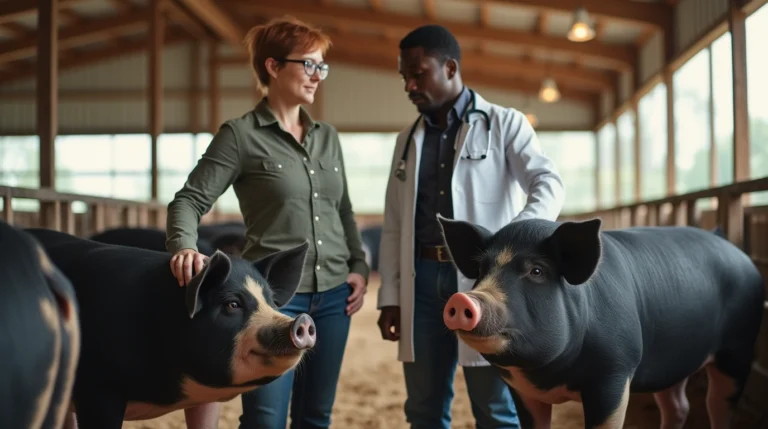Uncover the critical insights about Blue Tongue Disease in pigs: Learn the 7 key causes, recognize urgent signs, and protect your livestock with expert strategies.

Table of Contents
Blue Tongue Disease represents a significant threat to pig farmers and livestock managers worldwide. This viral infection, transmitted by specific insects, can devastate pig populations if not quickly identified and managed. In this comprehensive guide, we’ll explore the intricate details of Blue Tongue Disease, empowering farmers and veterinary professionals with critical knowledge to protect their herds.
What is Blue Tongue Disease?
Blue Tongue Disease is a non-contagious, vector-borne viral illness primarily affecting ruminants like sheep, cattle, and occasionally impacting pigs. Caused by the Bluetongue virus (BTV), this condition is transmitted through bites from infected Culicoides midges, small biting insects prevalent in warm, humid environments.
Key Characteristics
- Viral origin: Bluetongue virus (BTV)
- Primary transmission: Culicoides midge bites
- Affected species: Primarily ruminants, occasional pig impact
- Global distribution: Widespread in tropical and subtropical regions
7 Critical Causes of Blue Tongue Disease in Pigs
1. Culicoides Midge Transmission
Primary Transmission Vector: Culicoides midges serve as the primary biological vector for Blue Tongue Disease. These tiny insects become infected after biting a viremic animal and subsequently transmit the virus to healthy livestock.
Key Transmission Factors:
- Warm, humid environmental conditions
- High midge population density
- Proximity to standing water
- Seasonal variations in midge activity
2. Environmental Conditions
Climate and geographical location significantly influence Blue Tongue Disease prevalence. Regions with:
- Consistent warm temperatures
- High humidity
- Dense vegetation
- Proximity to water bodies
Are more susceptible to increased midge populations and viral transmission.
3. Genetic Susceptibility
Different pig breeds exhibit varying levels of resistance to Blue Tongue Disease. Factors influencing genetic susceptibility include:
- Breed origin
- Genetic lineage
- Immune system robustness
- Historical exposure to similar viral strains
4. Compromised Immune Systems
Pigs with weakened immune systems are more vulnerable to Blue Tongue Disease. Contributing factors include:
- Malnutrition
- Concurrent infections
- Stress
- Advanced age
- Poor living conditions
5. Livestock Management Practices
Improper farm management can increase Blue Tongue Disease risk:
- Overcrowded living spaces
- Inadequate pest control
- Poor sanitation
- Limited veterinary monitoring
6. Regional Viral Strains
Different geographical regions host unique Blue Tongue virus strains, each with distinct:
- Transmission efficiency
- Virulence
- Potential for mutation
7. Seasonal Migration Patterns
Migratory livestock and wildlife can introduce and spread Blue Tongue Disease across different regions, facilitating viral transmission.
Recognizing Blue Tongue Disease: Critical Signs
Physical Symptoms
| Symptom | Description | Severity |
| Fever | Elevated body temperature | Moderate |
| Oral Lesions | Inflammation in mouth/tongue | High |
| Respiratory Distress | Labored breathing | Critical |
| Swelling | Facial and limb edema | High |
| Reduced Appetite | Decreased food intake | Moderate |
| Weight Loss | Rapid body mass reduction | Critical |
| Behavioral Changes | Lethargy, isolation | Moderate |
Rapid Response Strategies
Immediate Actions
- Isolate suspected infected animals
- Contact veterinary professionals
- Implement strict biosecurity measures
- Document and track symptoms
- Collect blood samples for testing
Prevention Techniques
- Regular veterinary screenings
- Effective midge control
- Vaccination programs
- Robust farm hygiene practices
- Strategic livestock management
Recommended Pet Products on Amazon
- Livestock Digital Thermometer
- Professional Veterinary Midge Repellent Spray
- Comprehensive Livestock Health Monitoring Kit
- Advanced Biosecurity Farm Protective Gear
Frequently Asked Questions (FAQ)
Q1: Is Blue Tongue Disease fatal for pigs? While not always fatal, severe cases can lead to significant health complications and potential mortality.
Q2: Can humans contract Blue Tongue Disease in pigs ? No, Blue Tongue Disease does not transmit to humans from infected animals.
Q3: How quickly does the disease progress? Progression varies but can advance rapidly within 3-7 days post-transmission.
Q4: Are vaccines available? Yes, region-specific vaccines exist for Blue Tongue Disease prevention.
Conclusion
Understanding Blue Tongue Disease requires comprehensive knowledge, proactive management, and swift intervention. By recognizing causes, symptoms, and implementing strategic responses, farmers can significantly mitigate risks to their livestock.
Share Your Experience: Have you encountered Blue Tongue Disease in your livestock? Leave a comment below and help fellow farmers learn from your insights!
Explore More: Visit BlithePet for expert pet care recommendations and in-depth agricultural health guides.





